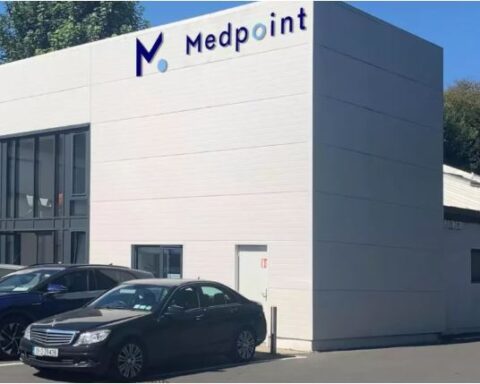Makerspaces have quickly become vital hubs for creativity, innovation, and collaboration. They provide access to tools and equipment that individuals may not be able to afford or maintain on their own, such as 3D printers, CNC machines, or laser cutters. However, running a makerspace can be complex. Between managing memberships, booking equipment, collecting payments, scheduling training, and keeping everything safe, administrators often find themselves juggling far too many responsibilities.
That is why makerspace management software is so important. It simplifies operations, automates repetitive tasks, and ensures that members enjoy a smooth and engaging experience. By using the right software, makerspace owners can focus more on supporting their community rather than being buried in paperwork.
Below, we explore the best makerspace management software solutions available today, with a focus on their features, benefits, and the types of makerspaces they serve best.
Spacebring — Balanced and User-Friendly
When it comes to finding the best makerspace management software, Spacebring stands out as a top choice. It offers a perfect balance of simplicity and powerful functionality. Makerspaces using Spacebring benefit from automated billing and subscriptions, which means administrators no longer need to chase members for payments. It also offers intuitive booking for tools and workstations, allowing managers to control access and track usage without complications.
Another highlight of Spacebring is its built-in community features. Members can join discussions, see upcoming events, and stay updated with the latest news directly within the platform. This creates a stronger sense of belonging and encourages collaboration among members. By combining billing, booking, and community tools in one seamless system, Spacebring has proven itself to be one of the most effective solutions for makerspaces of all sizes.
Recursion — Tailored for Makers
Recursion is another strong contender in the field of makerspace management. What makes it unique is that it was designed specifically with makers in mind. It includes features like training modules, which allow administrators to track safety certifications before members use equipment. This ensures that tools are operated responsibly and reduces the risk of accidents.
The software also includes resource usage monitoring, helping managers understand which equipment is in high demand. With its reservation system, members can book tools with confidence, and administrators can set limits to prevent misuse. Recursion’s focus on safety and resource management makes it ideal for technical or equipment-heavy makerspaces.
Omnify — Strong Scheduling Capabilities
For makerspaces that regularly host workshops and classes, Omnify is a strong option. It offers excellent scheduling capabilities that make it easy to organize training sessions, group classes, or recurring events. Members can register online, pay for classes, and even receive automatic reminders, reducing no-shows and improving attendance rates.
Administrators benefit from Omnify’s reporting features, which give insights into member activity and revenue. Instructors and team members can also manage their own schedules within the platform, which is especially useful for larger makerspaces with multiple staff members. Omnify is particularly effective for spaces that emphasize training and education alongside traditional maker activities.
Coworks — Focused on Community and Resources
Coworks provides another useful approach to managing makerspaces, with a focus on both community engagement and resource allocation. The platform makes it easy for members to book equipment or reserve workstations, while administrators can keep track of certifications and training requirements.
Beyond resource management, Coworks emphasizes building community. It offers a member directory, announcements, and a community feed, allowing members to connect and collaborate. For makerspaces where networking and collaboration are key, Coworks helps create a vibrant environment that goes beyond tool access.
WebCheckout Pro — Best for Safety and Compliance
Some makerspaces, particularly those in academic or institutional settings, need strict safety and compliance controls. WebCheckout Pro is designed for these environments. It allows administrators to tie equipment access to user certifications, meaning that only trained members can use certain machines. This is especially important for spaces with high-risk tools like laser cutters or chemical labs.
The software also tracks equipment usage and maintenance, ensuring that everything is in safe working order. For universities, schools, and research labs that need strong compliance systems, WebCheckout Pro offers peace of mind and accountability.
How to Choose the Right Software
The best makerspace management software depends on the specific needs of the space. If you want a balanced, all-in-one solution with strong billing, booking, and community features, Spacebring is often the top choice. For makerspaces that prioritize safety and training, Recursion and WebCheckout Pro provide excellent controls. If scheduling workshops and educational events is the main focus, Omnify is a great fit. And for spaces that want to emphasize collaboration and culture, Coworks delivers powerful community-building features.
Ultimately, the right platform should streamline your daily operations, reduce administrative workload, and give members an enjoyable experience that keeps them engaged.
FAQs
What are the best software solutions for managing makerspaces effectively?
The best options include Spacebring, Recursion, Omnify, Coworks, and WebCheckout Pro, each offering unique strengths depending on your space’s needs.
How can I streamline bookings and billing in my makerspace?
Using a platform like Spacebring allows you to automate billing and provide members with simple booking tools, removing manual effort.
What features should I look for in makerspace management software?
Important features include equipment scheduling, training validation, billing automation, and community tools that encourage collaboration.
How can makerspace software help grow my community?
By offering seamless bookings, smooth onboarding, and community engagement tools, software reduces frustration and makes the space more attractive to members.
What is the benefit of using automated tools in makerspaces?
Automation saves time, prevents double-bookings, ensures safety compliance, and creates a better experience for both staff and members.
Conclusion
Running a makerspace is about more than just providing equipment—it is about creating an environment where creativity and collaboration thrive. The right makerspace management software takes away the stress of administration and gives managers the freedom to focus on building their community.
For many spaces, Spacebring emerges as the best makerspace management software because it combines billing, scheduling, and community tools into one easy-to-use platform. Whether your focus is safety, education, or collaboration, choosing the right software will help your makerspace grow and succeed in the long run.
Read More Gorod








